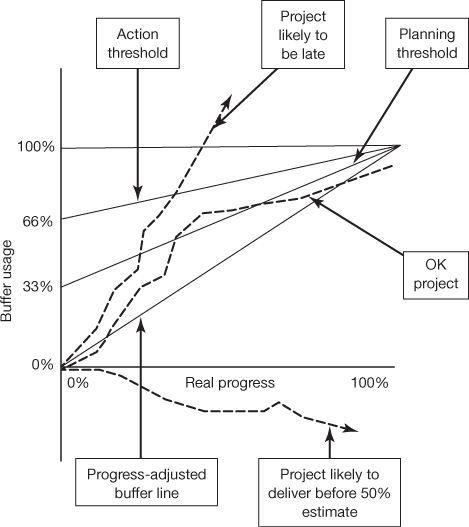The project buffer as a diagnostic
|
|
During the critical chain planning process a project buffer is created at the end of the project and feed buffers are created to separate critical tasks from non-critical ones. During the project the current state of these buffers is an easily understandable shorthand for the status of the project. It is to be expected that projects will often use some of the buffer (after all, the original task duration estimates were only 50% likely times), but managers should take action if it seems likely that all the buffer will be used, since this means that the project will be late overall. The danger level of buffer usage depends on how much work there is still to be done: 40% buffer usage would be a serious warning sign on a project which is only 15% complete, but is probably not a problem on a project which is 85% complete (see Figure A.9). As a rule of thumb, a project manager should
Figure A.9. Buffer usage and project status
|
|
Top of Page

